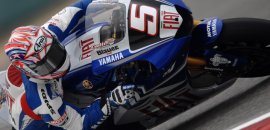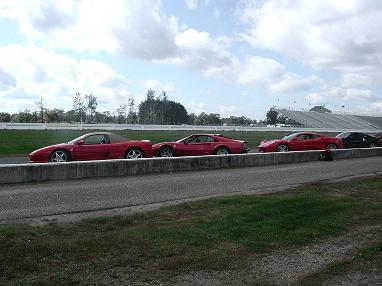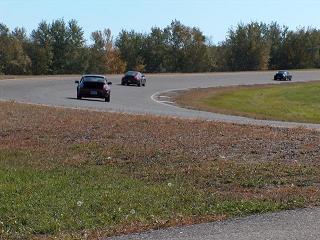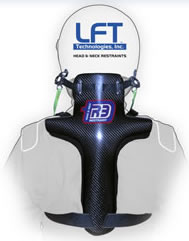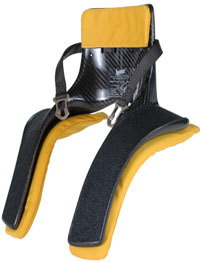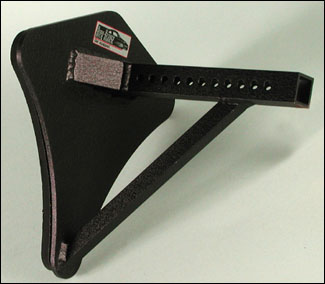Safety at the trackFrom Trackpedia
Discussion forumClick here for our forum dedicated to questions on track safety including clothing and equipment. We'll be consolidating the best of that forum and what we find around the web in to these wiki pages. Track safety is paramount. The main objective of a track day is to be safe and drive home afterwards. Different clubs/schools have different rules but generally the rules are similar to the following. Drivers education is about providing a safe place for drivers to improve their driving ability. Most schools break drivers in to groups based on ability/experience. A fast car does not mean that you'll be in the fastest group as you'd be amazed the horse power upgrade that an experienced driver can make to a car. As for safety equipment, the best advice is to look at a full racing setup approved by a racing body like SCCA or the PCA. Many occasional track day users will find these setups unacceptable in a daily driver car. They may not even be safe. This section will cover what the minimum is and reasonable upgrades from there. These are ordered in a progressive order, later sections are safer in combination with earlier sections. It's only a DE, how dangerous can it be...Any time you sit behind the wheel of a car, you're putting yourself in a dangerous situation. You're probably more likely to get into an accident on the way to the track than at the track... because at the track you'll be subject to rules, instruction, and supervision designed to make it as safe as possible. Unfortunately, if you do happen to have a problem on a track you're going to moving a lot faster then your garden variety fender bender, and so the consequences can be much higher. Some say HPDE is not as dangerous as racing but if you hit something at speed then the physics don't care whether it's a DE or a race. It's going to hurt. 110mph in to walls that line many tracks, even for an offset collision, will do a lot of damage to your car. There are steps you can take to limit that damage to your car. Some drivers recommend:
This is expensive, expect around 5k USD for this no matter what the car. It's cheap if something happens. Your odds of being hurt will be significantly lower than in your stock car. How much safety equipment you need for your car depends on:
Regardless of how much equipment you decide you need, you'll find some advice about making the final choices here. Whats equivalent safety?This means that what ever you did for safety on the drivers side of the car, you need at least the same on the passenger side. You can't be sitting in your car with your instructor wearing a 6pt polyester harness in a carbon fiber seat with your instructor in the stock seat with a 3pt belt. Have a heart, that would be a very nervous instructor... You need the same level of protection for both occupants. I have seen some cars with only one 6pt harness on the drivers side. However, when two people were in the car then both used the (still installed) 3pt belt. That looks suspect to me though. Upgrade the carbon unit in the carThe biggest safety factor in the car is you. The more you educate yourself in driving, the safer you'll become. Spend money on modding yourself by gaining school/track time before any other performance modifications. The basicsFirst and foremost, plan ahead and read any and all rules and regulations for the event in which you will be participating. There's nothing worse then showing up for an event, only to be denied tech because you didn't read the requirements. Stack Many DE days have a minimum as a stock street car with a 2.5lb fire extinguisher mounted where the driver can access it. Most, if not all organizers will want the car checked and signed off by a dealer/mechanic before allowing you on the track. HelmetAgain... check with the organization running the event. Even though some event hosts still allow M rated and non-Snell tested helmets, it is recommended that you go with a reputable brand that is tested to Snell standards.
Motorbike helmets won't do. If you aren't using a head and neck restraint then buy the best helmet you can afford. A composite model if you want. A lighter helmet is safer than heavier one in an impact. If you aren't planning on buying a neck restraint then we'd recommend the lighter composite helmets. ClothingMost require cotton pants and a cotton sweater with long sleeves. A fire proof racing suit is optional and really depends on your level of paranoia (yep, I have one). Fire suits aren't as good as you'd think also. I was quite surprised that a fire suit will only give maybe 13 seconds of protection before second degree burns. This kind of shocked me. 13 seconds isn't a whole lot of time. Course, in a t-shirt and jeans you're already cooking at 13 seconds but still, I thought you'd have longer. Adding nomex underwear apparently adds 6-9 seconds to this also but still, it's not a whole lot of time but is a lot better than normal clothes. Most people use sneakers for shoes and you can buy driving shoes from between 100 and 200 dollars. We're adding a wiki section on Fire proof clothing. Head and Neck restraintsA H&N restraint is basically an extension to your helmet which protects your neck is a collision. It lowers the strain on your neck to a level that hopefully avoids it breaking or causing brain stem damage.
Please see our specific article on Head and Neck Restraints SeatsWhile regular car seats and even 3-point standard belts are generally fine, racing seats are a good upgrade and they'll help you drive better due to increased amount of friction between the seat and the driver's body. A racing shell is also a prerequisite for installing harnesses. I don't know of anybody who recommends harnesses with a stock seat setup, especially Porsche seats. This is usually an expensive upgrade. Seats easily cost 700 each. Mounting kits usually cost around 200-300 dollars a side. Examples of seats would be seats from Sparco and Recaro. Some more economical brands include Corbeau, Cobra, Kirkey, Ultra-Shield, Sparco, Momo, Recaro. All racing seat vendors also offer carbon fiber versions of their Fiberglass seats. These are pricey, usually between 1800 and 2700 US each. They are stronger than fiberglass and lighter and probably don't flex as much although with a back brace in, my Recaro Pole Positions don't move at all. This is a case of you get what you pay for, they are better but it's a lot more money. Some people get a carbon fiber seat for the driver side only. This still meets equivalent safety for PCA. One particular sort of seat is a "bucket" seat, which is bolted down and is than carefully tuned. This is important because the actual risk in normal car seat without the seat belts fastened, is for the seat to travel across it's rails, crushing the lower portion of the body against the lower dash and steering wheel. Remember, though, that the harness is more important than the seat itself! Additionally, one must adjust the seat correctly and position himself correctly, to ensure that the seat and belts do their job efficiently. HarnessesA 5pt or 6pt harness and mounting system will further improve safety. These are necessary if you're using a Hans device. You should really have proper racing seats before you install harnesses. A 6pt is better than a 5pt. Harness are made from either nylon or polyester. Polyester is better as it doesn't stretch as much as nylon. A nylon belt stretches around 15% on impact. Polyester is typically half that. A 6pt supports the hips better and this improves safety. Most systems allow both the 3pt stock belt and 5/6pt harness to be attached at the same time. The car must have the 3pt belt to be street legal. The 5/6pt harness isn't legal for use on the public roads. Some argue that a full harness without a rollbar is more dangerous than a stock 3pt belt. They claim that in a rollover that you'll end up supporting the weight of the car on your head which I'm told is a fatal exercise. However, statistically, the most likely accident is an angular frontal collision and a full harness is hands down safer than a 3pt system in this much more common scenario. Safety is a statistics game so if you play the odds, you'd put in the harness. Many here on Trackpedia.com feel VERY strongly about this issue, and are not afraid to rebut many of the status-quo ideas of harness safety. The following was written by Curious, and with his permission, I've added it here.Stack 11:11, 8 March 2007 (PST) I've seen more aftermarket harness setups that (to me) seem more dangerous than using the stock 3-point belts in combination with an airbag (and remember that airbags offer NO protection for 4/5/6 point harnesses, so what you might gain in extra security, you can easily give up in terms of cushioning post-impact). Stuff I see all the time: 1. 4-point harnesses without ASM: remember that submarining doesn't mean, "sliding under the lapbelt in an accident," when applied to streetcars driven on the track. It really means, "allowing the lapbelts to creep over the hipbones, thereby shifting the load of the accident to (soft) internal organs." And, with streetcars, submarining can happen long before the accident, when you tighten the shoulderstraps *before* the lapbelts (a big NO-NO) in the paddock, when you're thrown forward under hard braking or thrown sideways under hard cornering, etc. I've never worn a 4-point harness that didn't ride up over the course of a session. Even with ASM, if you don't follow the RIGHT procedure for tightening the harness (first the lapbelts as TIGHTLY as possible, then the shoulderstraps, making sure the buckle is truly "low and tight" across your lap), you can put your organs at risk. Solution: get a 6-point harness. 2. Anti-sub belts routed over the front of the seat lip (worthless) or under the thighs and back down (better, but, per Schroth, still inappropriate for all but reclined positions). Solution: cut a hole in the seat cushion and use a sub-strap bar mounted to the seatrail or through-bolted to the chassis floorpan with a backing plate. 3. Shoulder straps running *around* a seatback: unless the straps run DIRECTLY from the harness bar to your shoulders, they risk falling off your shoulders under load. This is really common and really dangerous. Even a small headrest can deflect the straps enough that you're at risk in the event of an accident, particularly one that's not head on, so your torso is thrown slightly sideways. Solution: cut holes in the seat or buy an aftermarket seat with holes pre-cut. 4. Shoulder straps running 3-4 feet to the back of the car (very bad, as all harness straps are designed to stretch) or running over the seat and downward by 45 degrees or more (even worse, unless you have a seat specifically designed for this purpose, as this compresses the spine in the event of an accident). Trying to use the rear seatbelt attachment points or running the straps to the floor is generally not a good approach. Solution: get a proper harness bar that sits 6" or so behind your head, even if it means you have to install/remove it for track use. 5. Lapbelts mounted to the same holes as the stock belts with longer bolts, particularly for belts that are attached to the seat and not to the chassis: this turns the point of attachment into a powerful lever! Solution: cut holes in the floorpan and through-bolt the lapbelt hardware to backing plates mounted under the chassis. This shifts the load from the seat to the chassis which is generally better anyway, as stock-seats are *not* designed for the sorts of high loads we generate at the track, so relying on them to secure your lapbelts isn't generally a good idea. 6. And then there's all the other stuff I routinely see -- use of non-grade 8 hardware, improper belt geometry (this is really important and often ignored), routing of lapbelts over seats with very high bolsters, etc. Finally, remember that the better you secure your torso, the greater the risk that you'll hyperextend the spine in the event of a collision. My advice: get a Schroth Profi II-6 (meaning 2" straps in combination with a two-strap antisub belt) and buy a HANS. The 2" lapbelts are easier to secure really tightly than 3" belts (and, provided they route over the hipbones, you're not losing much in terms of load distribution in exchange for getting a belt that can really be cinched down). The 2" shoulder straps fit better on the HANS yoke, which itself does a better job of spreading the load than a 3" strap without a HANS. And the HANS will prevent your head from becoming an unrestrained pendulum in the event of a front-end collision. I'm sorry to preach, but this topic is SOOOO important and SOOOO often taken for granted. I can't count the number of times that I've had students argue that because some "big-name" company sold the product, the product is safe. It often isn't. When in doubt, I'll wear the stock 3-point belts before I'll use an aftermarket harness that seems suspect. Curious
Harness guide barThis is a bar that is mounted behind the seats and triangulated with the floor, usually with another bar that attaches to the lower seat belt mounts. This isn't really recommended. An example would be this from Brey Krauss Harness mount systemExamples of this would be a Brey Krauss setup and this is better than a guide bar. Roll hoop with harness guideA DasSport Weekender is an example of such a bar. It offers rollover protection and can be ordered with foot plates to make it PCA racing legal. Harnesses are attached to the car as follows. The shoulder belts can be attached to the harness bar or pass over the guide bar and bolted to the rear of the car. If you are bolting harnesses to the car then the attachment point needs to be able to hold 3000lbs or better. That is usually accomplished using the stock belt mount points or grade 8 bolts and big washers/plates on the outside of the mounting point. The submarine belts (they go through your legs) are either bolted to the floor under the seat or attached to a bar under the seat. Most racing organisations will only accept bolted in belts. Harnesses must be installed correctly to work correctly. Make sure you either get it professionally installed or have someone competent (a professional shop) check it to make sure it's good. The angles that the belts should be at relative to your body ARE very important. One of the biggest problems here appears to be getting a compatible set of parts, a system. Seats with the holes in the right place for YOUR height, a harness bar in the right position for YOUR height and holes so the belt angle from your shoulder is 0-10 degrees. 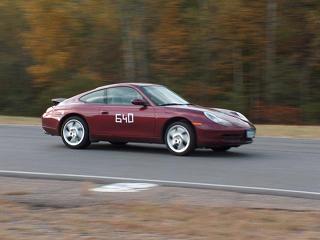 Back bracesSeats can break in a rear impact. Obviously, this isn't a good scenario if it happens. A back brace extends the roll bar/cage to support the seat back and this helps to significantly reduce the occurance this type of event. Brey Krauss sell a back brace as an example. Full roll cagesA full roll cage is the safety option for a track car. But, there are arguments about the safety of a full cage on the street. The argument centers around if your head stike the bar. Basically if your head strikes a normal part of the car, the contact point is larger than if it hits a roll bar. A smaller contact patch means more energy which means you get hurt. Covering the bars with SFI foam is only really meant for helmets also. So, if you put a full cage in your car then your car isn't safe on the street as if your head struck the bar then you'd be hurt a lot more than if you hit the normal interior. When should I add all this safety equipmentThis is a hard question to answer, mainly because there are so many opinions... so here's mine as an event participant, and organizer: For DE and lapping day purposes, driving a street car (if not a daily-driver), you should leave the car as close to stock as possible. Keeping in tact the factory safety system so it can work as it was designed, especially if your car is equipped with airbags. This should be especially true for the driver first starting out with track events, and here's why: You need to learn to walk before you can run
OK... I can run, should I get some harnesses now? Not necessarily. Now you've got a different set of questions to ask yourself:
External Information |
